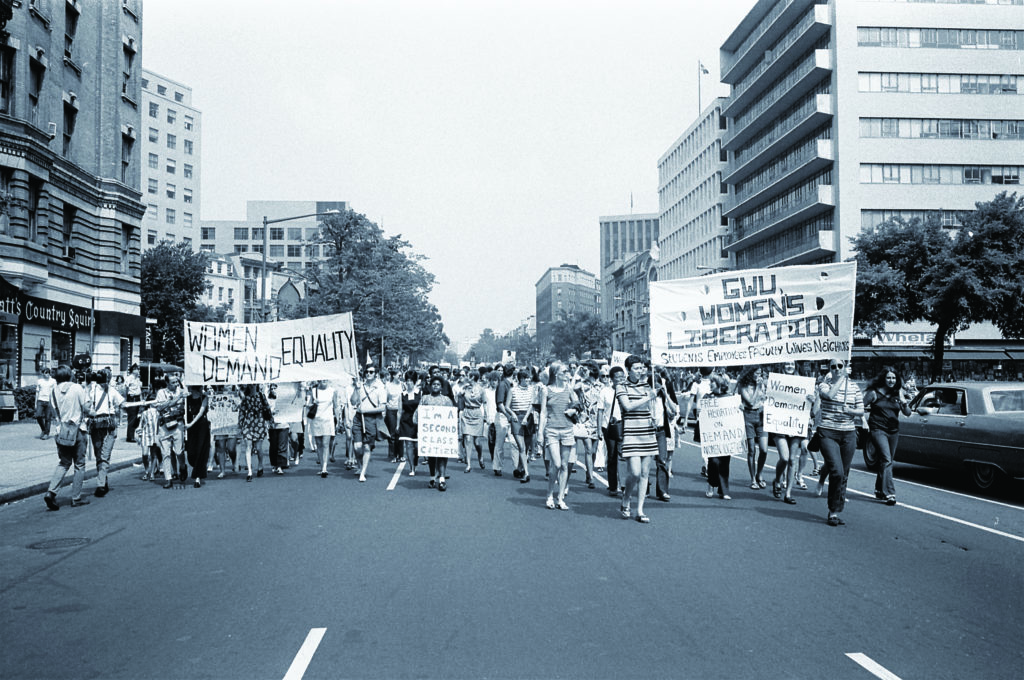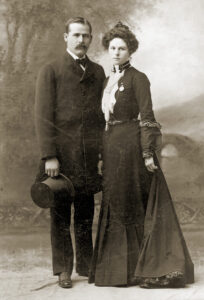Supreme Court Justice Ruth Bader Ginsburg died Sept. 18 of metastatic pancreatic cancer. She was the second woman named to the High Court and had served 27 years.
Idaho mother’s inconsequential lawsuit challenging gender discrimination forced a rewrite of the entire U.S. code
REED V. REED
404 U.S. 71 (1971)
LAWS THAT TREAT MEN AND WOMEN DISSIMILARLY VIOLATE THE 14TH AMENDMENT’S EQUAL PROTECTION CLAUSE.
Besides establishing national legal standards, most landmark Supreme Court decisions settle matters of vital importance to litigants: whether someone lives or dies, the fate of a lost job, who can marry whom. But in Reed v. Reed the stakes were so slight that Justice Harry Blackmun, in the memo he routinely wrote in preparation for hearing oral arguments, called the matter “much ado about nothing.”
October 1971 arguments hung on a struggle between Sally and Cecil Reed of Boise, Idaho. The Reeds, who had divorced, disputed who should oversee distribution of a few possessions—including a clarinet, books and LPs, and $495 in a college savings account—their adopted son, Skip, 16, left in 1967 when he killed himself with his father’s gun in his father’s basement. A lower court made Cecil Reed executor. Sally Reed’s objection to that led to the U.S. Supreme Court for the first time finding unconstitutional a law that treated men and women differently. With its ruling in Reed, the Court overturned millennia of judicial holdings based on assumptions that men and women had inherently different roles in society.
Probate found Sally Reed to be as competent as Cecil to be Skip’s executor. But an Idaho statute specifically said that in such matters “males must be preferred to females.” At that time, many laws differentiated between men and women. These statutes, seldom contested, had always been upheld. Only 10 years before the Reed case, the High Court unanimously OK’d a Florida law that automatically put men on jury rolls but included only those women who asked to be there. (Virtually none did.)
Gender distinctions were ingrained in American jurisprudence; Sally Reed had trouble finding anyone to litigate her attack. Sixteen Boise attorneys rebuffed her before Allen Derr took her case. Derr also thought her claim hopeless but believed the Idaho law unconstitutional and worthy of challenge. (Derr’s mother, in 1937, was the first woman to serve in the Idaho Senate.) In an Idaho district court, Derr argued that the rationale offered for preferring men as executors—that men “have a better head for business than women”—was so unattached to evidence as to violate the 14th Amendment guarantee that all have “equal protection of the laws.” To virtually unanimous surprise, the judge hearing the case, Charles R. Donaldson, agreed with Derr. “The Court can see no reasonable basis for the classification which gives preference of males over females,” Donaldson wrote in his 1968 decision.

Sally Reed’s victory was as short-lived as it was startling. Cecil Reed appealed to the Idaho Supreme Court. In 1970, that body ruled. Donaldson, now on the state’s highest court, could not review his own opinion. It was a galling moment when all five of his colleagues on the tribunal called the preference for males valid.
Sally Reed wanted to fight on. At that time, the U.S. Supreme Court had to accept any appeal of a state high court decision upholding a state statute challenged as a violation of the U.S. Constitution. [Congress eliminated “mandatory jurisdiction” in 1988.] Derr, with limited resources, accepted a deal from the American Civil Liberties Union: he would present the oral argument to the High Court, but the ACLU would prepare Sally Reed’s written brief. That task primarily went to Rutgers Law School professor Ruth Bader Ginsburg, who in 1993 herself joined the Court.
Ginsburg’s 68-page brief became the template for challenges to laws making gender distinctions. “American women have been stigmatized historically as an inferior class and are today subject to pervasive discrimination,” Ginsburg wrote. She said laws treating men and women differently ought to be judged like laws making race-based distinctions—held to “strict scrutiny,” allowed to stand only for a “compelling” reason.
Ginsburg was tapping into the truth that the times were changing. Congress had passed the Equal Pay Act and banned sex discrimination in employment. The year before the Reed argument, 50,000 women had marched in Manhattan demanding equal rights, echoed by sister demonstrations in Los Angeles, Detroit, and Washington, DC. The legal world was beginning to see that existing gender distinctions were not rational. The Association of American Law Schools warned that institutions refusing to admit women stood to lose accreditation; prestigious law schools refused to let law firms recruit if they declined to hire female lawyers. And a few judges, like Donaldson, were refusing to adhere to let-different-treatment-stand precedent. Five months before Reed was argued at the U.S. Supreme Court, the California Supreme Court unanimously invalidated a state statute barring women from tending bar unless they or their spouses owned the establishment.

The Reed case’s very insignificance offered the justices a way to recognize that legal gender distinctions could be unconstitutional without ruffling many feathers. Ordering a military academy to accept female students or empowering women to compete for jobs heretofore reserved for men could have stirred widespread public resistance, whereas in Reed literally nothing was at stake. Before the High Court could hear the case, Idaho repealed its male preference provision. And to make sure the court’s ruling, while unanimous, created a minimum of ripples, Chief Justice Warren Burger assigned himself to write the decision.
Burger produced a brief opinion, passionless and narrow, not specifically overturning any precedent and refusing Ginsburg’s request to declare laws discriminating on the basis of sex be considered valid only if compelling logic dictated differential treatment. Burger instead emphasized that “this Court has consistently recognized that the Fourteenth Amendment does not deny to States the power to treat different classes of persons in different ways,” adding that “a classification must be reasonable, not arbitrary.” The Idaho executor law violated the guarantee of equal protection because that statute differentiated “on the basis of criteria wholly unrelated to the objective of that statute,” Burger wrote.
But even that deliberately limited measure of unconstitutionality had huge impact, given the previous anything-goes approach to gender differentiation. “In the wake of Reed, hundreds of laws, state and federal, were changed,” Ginsburg recalled 40 years later. “Congress went through all of the provisions of the U.S. Code and changed almost all that classified overtly on the basis of gender.”
And justices themselves began to see as unjust gender distinctions predecessors condoned. Three years after Reed, the Court held unconstitutional a Louisiana provision that the only women to serve on juries were those who had submitted written notice expressing a wish to do so. The Court followed that ruling three months later with a finding that it was unconstitutional for Utah to consider men minors until age 21 but treating women as adults at 18. In 1976 the Court ruled that Oklahoma was denying equal protection by allowing bars to sell women over 18 3.2 percent beer while male customers had to be at least 21.
In the near-beer case, the justices ruled that a law discriminating on gender grounds no longer could be defended just by showing its aim had a rational link. The new test: “Classification by gender must serve important government objectives and must be substantially related to achievement of those objectives.”
This SCOTUS 101 column appeared in the July 2020 issue of American History.





